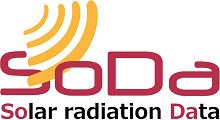Plane orientations and radiation components
Plane orientations and radiation components |
We propose the delivery of solar radiation data, built from satellite imagery, at different planes and azimuth described such as:
Conventions on SoDa: plane mode and azimuth conventions
Plane mode convention
|
||||||||||||||||||||||||||||||||||||||||||||||||||
Azimuth convention adopted by SoDa
Firstly, the azimuth convention is:
|
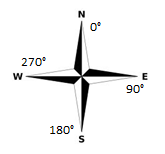 |
So orientation checking is :
- A tilted plane is north oriented if azimuth < 90° or azimuth > 270°
- A tilted plane is south oriented if azimuth > 90° and azimuth < 270°
NB: A plane which is not facing the sun might either be a human error, or may also be due to infrastructure or environmental needs (e.g. part of the rooftop north oriented).
For beginners
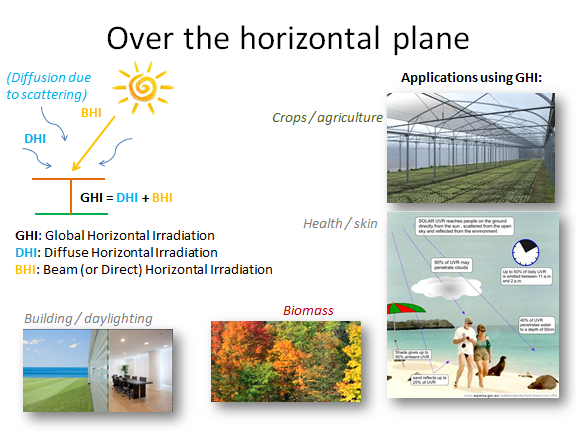 |
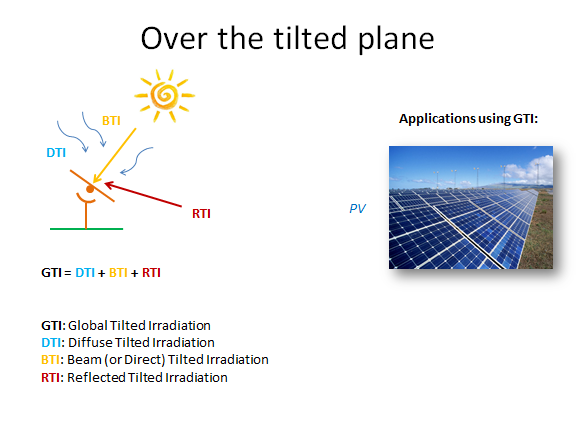 |
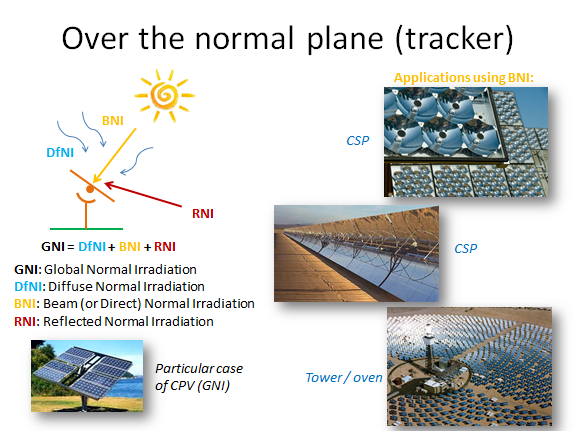 |
Note on the relationship between RTI (or RNI) and albedo:
The irradiation collected by a tilted surface is composed of a part of direct irradiation (as soon as the sun is visible by the panel), a part of diffuse irradiation coming for the portion of the sky vault visible by the panel, and a part of irradiation reflected by the ground. Indeed, when the plane is tilted, it "sees" a portion of the ground. Consequently the plane receives more solar radiation if the ground is highly reflected sun rays, i.e. for high albedo. The albedo caracterizes the reflective capacity of the ground. The default value on SoDa is 0.2. If the ground is not very reflective, like for instance dark ground, just set 0.1. Other examples of albedo values for oceans and seas is 0.05, 0.5 for sands, and 0.8 for snow.
